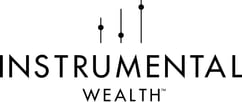Q1 2024 Review: Market & Economic Commentary
Check out our Q1 2024 Review: Market & Economic Commentary with Chief Investment Officer Matthew Harbert, CFA from Instrumental Wealth.
Play the video recording, or see the takeaways for each section below organized by section & topic. Each topic has screenshots from the presentation.
Table of Contents:
- Investment Markets (0:26)
- Global stock categories
- U.S. large & small cap equity performance
- Commodities performance
- Bond performance
- U.S. Economy (3:26)
- Fed tightening cycles
- Inflation rates
- Labor markets
- Recession indicators
- Key Takeaways (10:24)
- Inflation
- Fed Policy
- U.S. Recession
- Markets
Investment Markets (0:26)
All graphs and charts are for illustrative purposes only.
In this section, Matthew discusses the state of the Investment Markets in Q1 of 2024, reviewing global stock categories, U.S. large & small cap equities, and bond markets.- Global stock categories generally performed positively in the first quarter, with US large cap equities leading.
- US large-cap equities have continued their year-long trend of outperforming US small-caps, international developed markets, and emerging markets.
- The dominance in US large cap equities is mainly driven by seven major companies, though recent trends suggest a potential broadening of gains across more companies.
- The performance gap between the top seven companies and the other 493 in the S&P 500 has been narrowing.
- US growth equities have outperformed all other sub-asset classes in both the recent quarter and over the past twelve months.
- Commodities showed positive returns this quarter, but they, along with bonds, are the few asset classes still posting negative returns over the past year.
- Bond market struggles continued as yields, which had been declining for decades, began to rise sharply over the last three years, affecting returns.
U.S. Economy (3:26)
All graphs and charts are for illustrative purposes only.
In this section, Matthew discusses the state of the U.S. Economy in Q1 of 2024, reviewing Fed tightening cycles, inflation rates, and the U.S. labor market.
- The Fed completed an unprecedented tightening cycle last year, raising interest rates by 525 basis points in 17 months to combat inflation.
- Despite this aggressive rate hike, inflation has only partially retreated from its peak of 9% in June 2022 and remains above the Fed's 2% target.
- The inflation rate has stabilized in the range of 3 to 3.5% following the completion of the Fed's rate hikes.
- Key inflation components like energy and shelter costs have been volatile, with energy prices rebounding and shelter inflation remaining stubbornly high.
- Both headline and core inflation rates are significantly above the Fed’s target, with recent figures indicating an annualized rate around 4.4% for headline and 4.8% for core inflation.
- Consumer spending has remained robust, supported by credit card usage and declining savings rates, which could continue as long as employment remains stable.
- The labor market shows signs of normalization but remains tight, with job openings still significantly above historical averages.
- Job creation has been strong, with more than 200,000 jobs added monthly and a slight increase in the unemployment rate to 3.8%, still below the long-term average.
- Despite strong labor and consumption indicators, GDP growth slowed to 1.6% in the first quarter, raising questions about the potential for a recession.
- Recession indicators are mixed, with some predicting imminent recession due to an inverted yield curve, while others show improving conditions, suggesting varied economic outlooks.
Key Takeaways (10:24)
All graphs and charts are for illustrative purposes only.
In this section, Matthew shares his overall takeaways for inflation, Fed Policy, U.S. Recession, and the Markets in Q1 of 2024.
Inflation:
- We expect price pressures to continue as long as consumer spending remains robust.
- Credit cards and savings are being heavily used to fund spending needs.
- The catalyst for pullbacks in spending will be a weakening of the labor market.
- The labor market trend may take some time to get to normal.
- We may be entering a period where the normal rate of inflation is closer to 3% or 3.5% than the 2% we have been used to since the financial crisis.
Fed Policy:
- We should expect fewer rate cuts than has been projected, 1 maybe 2 this year (if any).
- We should also expect any cuts to start later, we think it will be closer to the end of the year or even 2025.
- In other words, we expect the scenario that rates will remain higher for longer.
U.S. Recession:
- Signals are mixed
- Inverted yield curve indicated recession is coming
- LEI no longer predicting a recession
- Consumers and Employment remain strong
- A recession in 2024 is a probability but we feel a higher probability of occurring in 2025.
Markets:
- We still prefer US equities relative to International equities
- Particularly US large cap equities
- Fixed Income
- While bonds have been challenged with rising rates, they are paying high enough yields that give us the ability to be patient.
- Rate cuts by the Fed will be a big tailwind to bond returns.
- We don’t think this is the time for big bets.
- With so many uncertainties, staying diversified across several markets should help mitigate the risks.
Not an offer: This document does not constitute advice or a recommendation or offer to sell or a solicitation to deal in any security or financial product. It is provided for information purposes only and on the understanding that the recipient has sufficient knowledge and experience to be able to understand and make their own evaluation of the proposals and services described herein, any risks associated therewith and any related legal, tax, accounting or other material considerations. To the extent that the reader has any questions regarding the applicability of any specific issue discussed above to their specific portfolio or situation, prospective investors are encouraged to contact Instrumental Wealth or consult with the professional advisor of their choosing.Forward-looking statements: Certain information contained herein constitutes “forward-looking statements,” which can be identified by the use of forward-looking terminology such as “may,” “will,” “should,” “expect,” “anticipate,” “project,” “estimate,” “intend,” “continue,” or “believe,” or the negatives thereof or other variations thereon or comparable terminology. Due to various risks and uncertainties, actual events, results or actual performance may differ materially from those reflected or contemplated in such forward-looking statements. Nothing contained herein may be relied upon as a guarantee, promise, assurance or a representation as to the future.Past Performance: There is no guarantee that the investment objectives will be achieved. Moreover, the past performance is not a guarantee or indicator of future results.
Instrumental Wealth, LLC (“Instrumental Wealth”) is an SEC registered investment adviser located in Florida. Registration does not imply a certain level of skill or training. Instrumental Wealth may only transact business in those states in which it is notice filed or qualifies for an exemption from notice filing requirements. Information about Instrumental Wealth (inculcating its services, fees, and registration status) is available on the SEC’s IAPD website at www.adviserinfo.sec.gov. There is no guarantee that the views and opinions expressed in this presentation will come to pass. Advisory services are only offered to clients or prospective clients where Instrumental Wealth and its representatives are properly licensed or exempt from licensure. Past performance is no guarantee of future returns. Investing involves risk and possible loss of principal capital. No advice may be rendered by Instrumental Wealth unless a client service agreement is in place.

